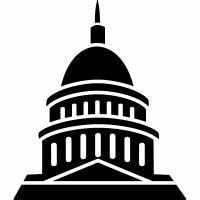July 1, 2025
Today the senate narrowly passed the “One Big Beautiful Bill”.
The provisions expanding IRC section §1202 / Qualified Small Business Stock (QSBS) remained unchanged from the initial version of the bill, and include:
- Increasing the Corporate-Level Aggregate-Asset Ceiling to $75M (from $50M prior to the bill)
- Increasing the Per Taxpayer Exclusion to $15M (from $10M prior to the bill)
- Phasing in the QSBS benefits starting with 50% for stock held 3 years, 75% for stock held 4 years and 100% after stock is held 5 years (whereas prior to the bill stock had to be held for 5 years prior to any QSBS benefits being realized)
These provisions would generally apply to stock issued after the new changes are enacted.
What Enabled the Inclusion of the QSBS Amendments in the Final Bill?
Portions of the QSBS amendments were initially introduced by Congressman Kustoff in 2023. The Kustoff bill included several other amendments that did not make it into the “One Big Beautiful Bill” – one focused on companies that begin as S-corporations and another seeking to clarify QSBS treatment of securities that are convertible into equity.
It appears part of the reason these additional measures were not included in the bill is due to the bill being a “budget reconciliation bill” and therefore subject to the Byrd Rule, whereby provisions must be linked to the budget (i.e. fiscal in nature and deal with taxation).
The QSBS provisions submitted in the initial version of the “One Big Beautiful Bill” made it through the “Byrd Bath”, and today also cleared the Senate’s “Vote-a-Rama”. The Vote-a-Rama occurred over the past couple of days, and entailed Senators offering amendments to the reconciliation bill.
Now that the Vote-a-Rama is completed, the amended bill will now head back to the House for final approval.
What Happens Next?
President Trump has urged Congress to deliver the bill to his desk by the 4th of July, but first it must go back to the House. Since the House version of the bill, released May 16, 2025, did not include the amendments to QSBS that are included in the Senate bill, we will closely watch how the House approaches these portions of the bill.
According to Andrew Seifert, a partner in Wipfli’s national tax office, there are two possibilities for where the bill heads next:
(1) “the House simply passes or rejects the Senate version of the bill, and
(2) that the House, “insist(s) on their own revisions to the Senate bill”.
Given the significant changes to the original House bill by the Senate, the House may wish to revisit some of the provisions. As Seifert noted, if the House takes this route, “the bill would then head to conference committee, where members of both chambers will meet to hash out a final version before sending it back to the House and the Senate for an up-or-down vote.”
We will continue to track developments as the bill proceeds through the process.
This article does not constitute legal or tax advice. Please consult with your legal or tax advisor with respect to your particular circumstance.

